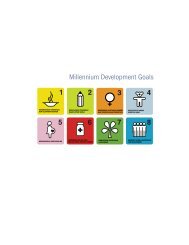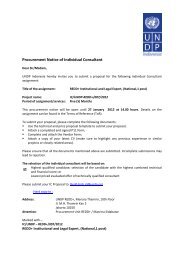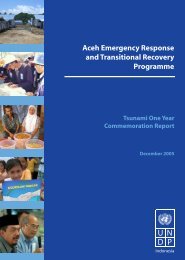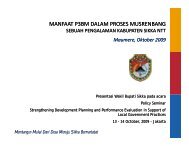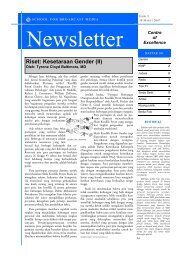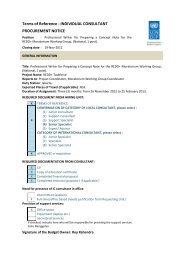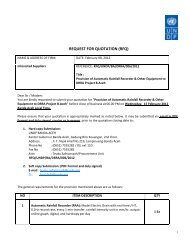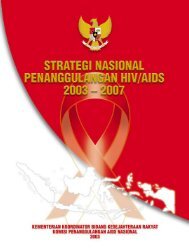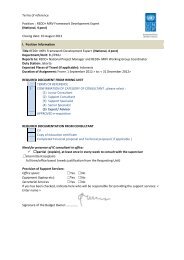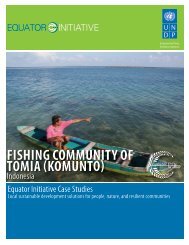English - UNDP
English - UNDP
English - UNDP
- No tags were found...
You also want an ePaper? Increase the reach of your titles
YUMPU automatically turns print PDFs into web optimized ePapers that Google loves.
Indonesia Progress Report on the Millenium Development GoalsBox 1. The national poverty lineThe national poverty line is the rupiah value an individual needs to fulfil his or her daily minimum requirementfor food of 2,100 kilocalories (kcal), plus non-food minimum needs, such as housing, clothing, health,education and transportation. The food poverty line is the cost of meeting the basic food needs of 2,100kcal per day, while the non-food poverty line is how much a person has to spend to fulfil their basic, minimumnon-food requirements. People whose expenditures are less than the Poverty Line are classified asliving below the Poverty Line, or as poor population.The poverty standard used by the Central Statistical Office (BPS—Statistics Indonesia) is dynamic becauseit has to be realistic and adjust to shifts in consumption patterns and national aspirations. For example,Figure 1.1 shows two different estimates for the proportion of people living below the poverty line in 1996,based on two different criteria: the 1996 standard and 1998 standard. 1 The 1998 revision was done not onlybecause of the shift in consumption patterns but also because the definition of minimum basic requirementsand commodities had to be broadened to take into account new policies affecting family expenditure, suchas the introduction of nine years of compulsory basic education. The poverty data across years in Table 1.1are based on the two standards—1996 for the earlier years and 1998 for the later ones.Box 2. Assessing MDG achievementHow the MDG achievement is judgeddepends on which criteria are used.Applying the international criteria of$1 per day a , the proportion of poorpopulation in Indonesia in 1990 was20.6 per cent. In effect, this meansthat Indonesia had already achievedthe 2015 MDG target of 10.3 percent by 1996 and then again, followingthe economic crisis, by 2002.Figure 1.3. Proportion of population living below $1 and $2 per dayOn the other hand, using the $2a day criteria gives quite a different picture: poverty fell from 71 per cent to 54 per cent from 1990 to 2002,making the target for 2015 35.5 per cent. This means that Indonesia has been successful in eradicating extremepoverty, but still has some way to go in eradicating moderate poverty.a Standardized to 1993 international prices.27



